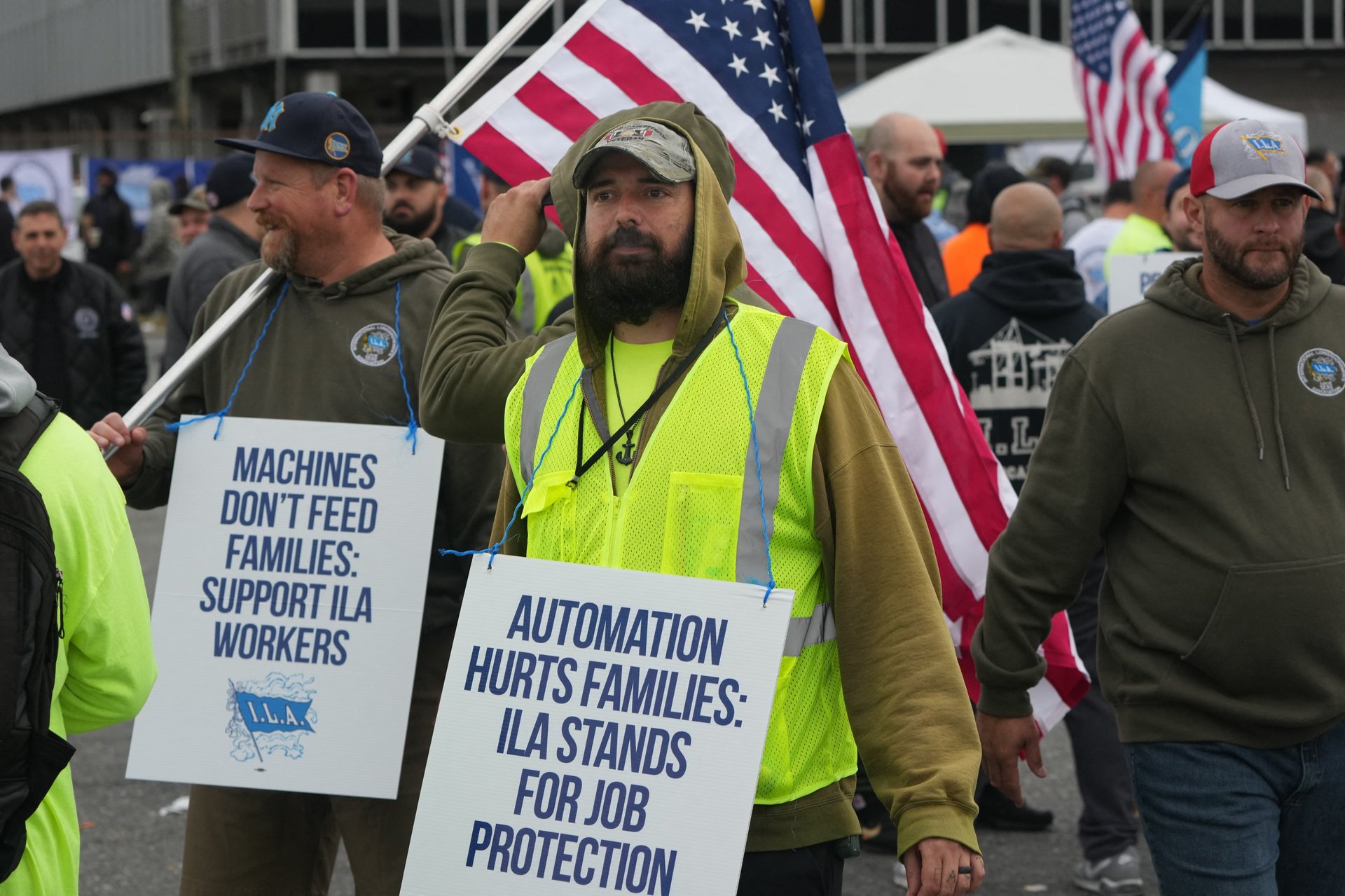'I will cripple you,’ dockworkers union chief said of economy before massive port strike
International Longshoremen’s Association president Harold Dagget said in September that the now ongoing port strike has the power to cripple the economy

Harold Daggett, the president and chief negotiator for the International Longshoremen’s Association (ILA), issued a stark warning in early September as the dockworkers’ union prepared for a significant strike. On Tuesday, that warning is now closer to becoming reality, as the strike just triggered the largest U.S. port shutdown in nearly 50 years.
Suggested Reading
“I will cripple you and you have no idea what that means. Nobody does,” Daggett said in a video released by the union last month.
Related Content
“These people today don’t know what a strike is,” Dagget said as he warned his union could “cripple” the U.S. economy. “Everything in the United States comes on a ship.”
He went on to explain how he expects the strike to unfold, as it starts to impact multiple sectors.
“First week, it will be all over the news — boom, boom, boom. Second week, guys who sell cars can’t sell cars because the cars ain’t coming in off the ships. They get laid off. Third week, malls start closing down. They can’t get the goods from China. They can’t sell clothes. They can’t do this. Everything in the United States comes on on a ship. They go out of business. Construction workers get laid off because the materials aren’t coming . The steel i s not coming in. The lumber is not coming in. They lose their jobs. Everybody is hating the Longshoremen now because now they realize how important our jobs are now.”
As Dagget noted, the effects of the strike will likely be far-reaching. Almost 180 trade associations representing companies across a series of industries — including automakers, retailers, toymakers, and even firms selling Halloween costumes — have warned that the strike will be “devastating.”
The ILA represents more than 85,000 workers and has been negotiating since last May with companies, terminal operators, and port associations represented by the United States Maritime Alliance (USMX). Without a contract between the groups, as many as 45,000 members walked off the job on Tuesday at more than a dozen major ports, including facilities in New York and Texas.
The union is demanding higher wages and a salary that outpaces inflation — which is cooling after a long stubborn streak — and provides more than the small wage increases included in its last contract. Between 2018 and 2024, employees received a $1 per hour increase to their wages, to a maximum of $38 per hour — about $79,000 annually on a 40-hour work week — while new employees started at $20 an hour.
In addition to wage increases, workers are also seeking protections against automation. The exact details of the union’s demands and the alliance’s counteroffers have not been disclosed.
- William Gavin contributed to this report.
